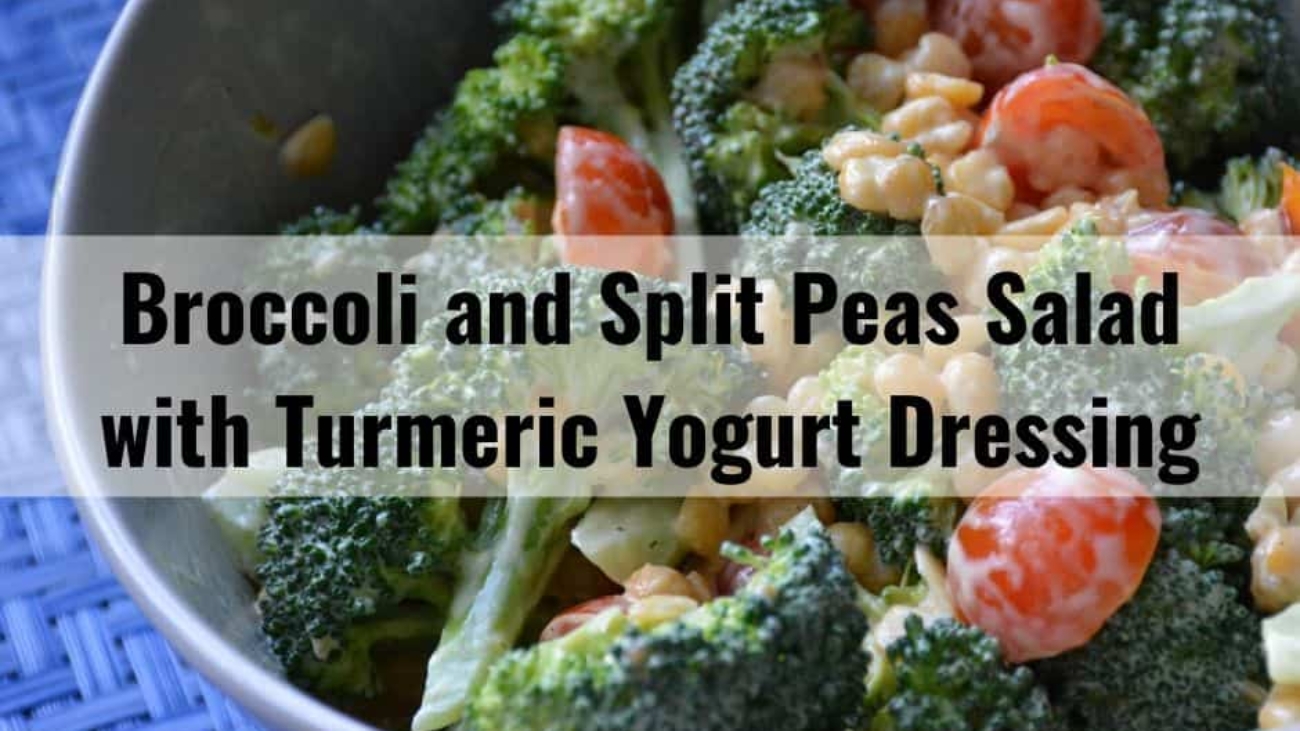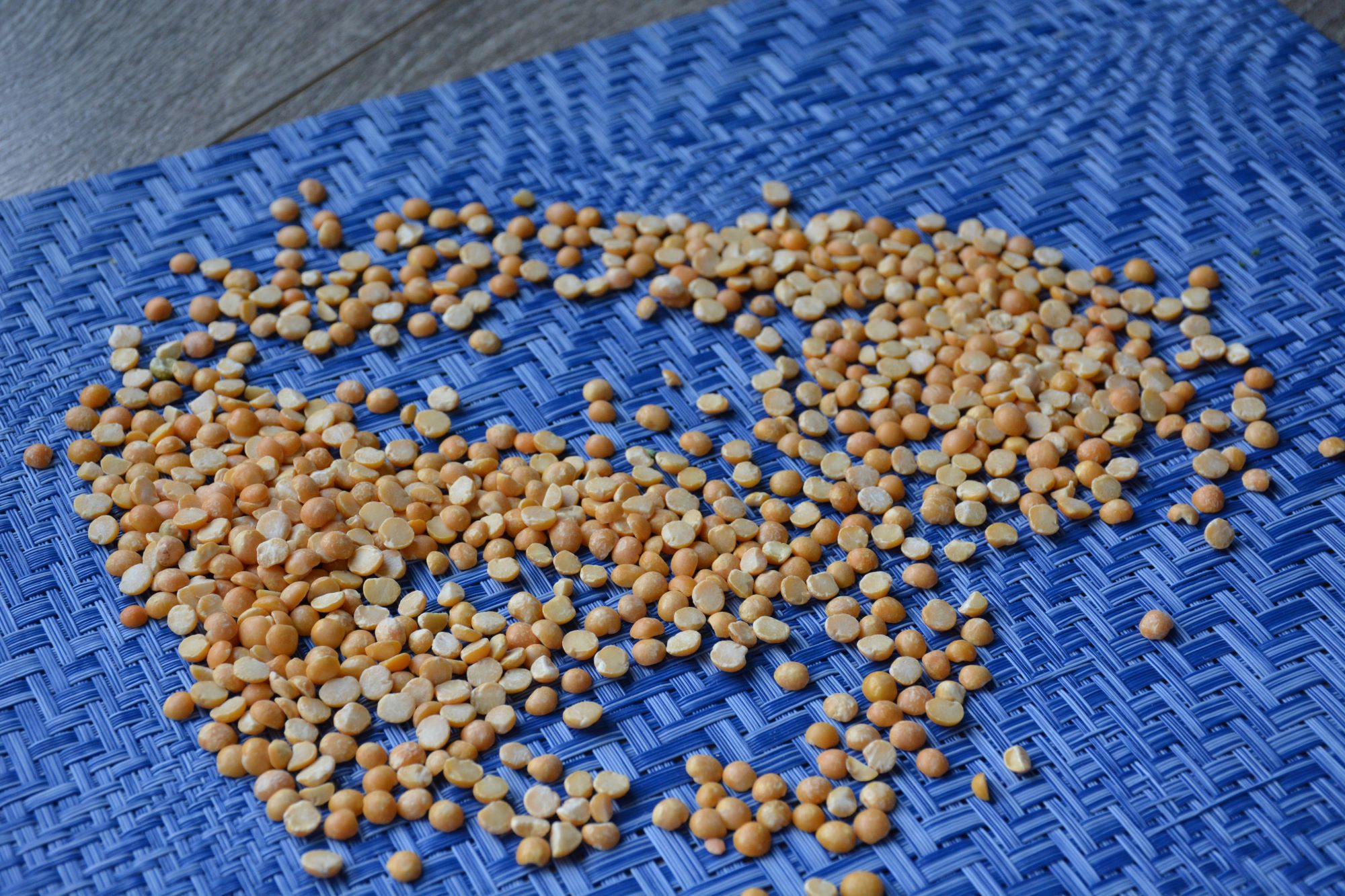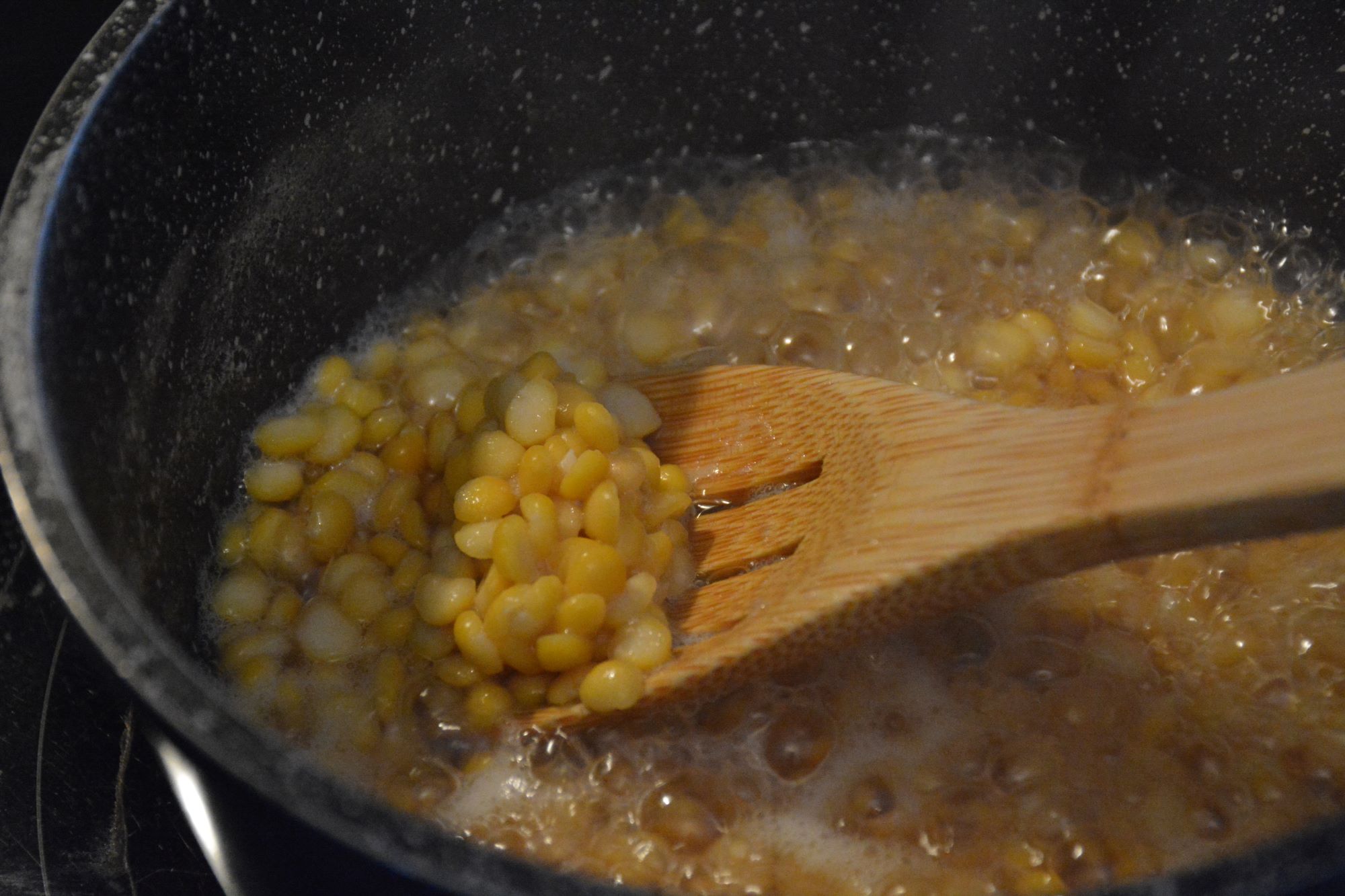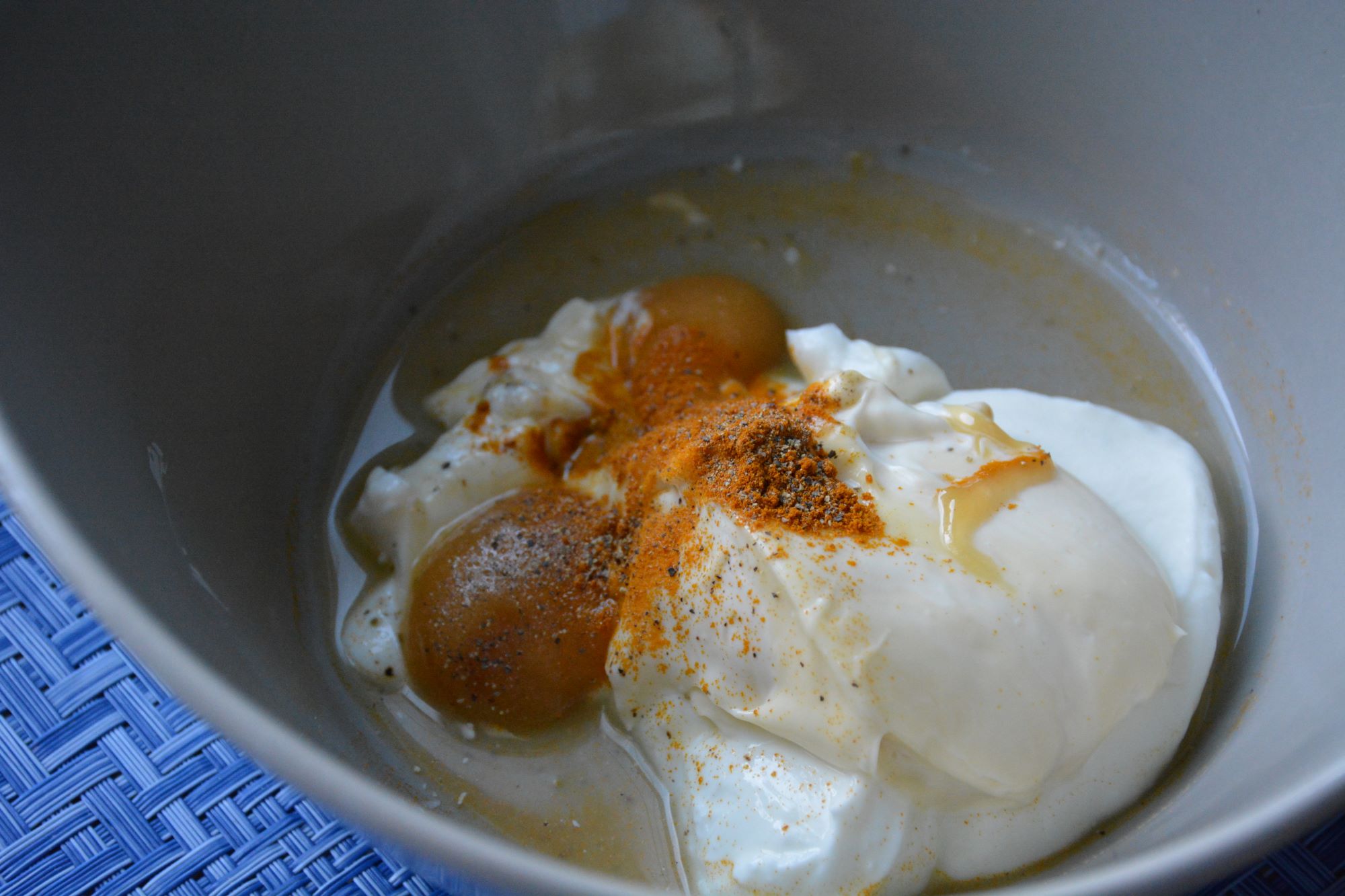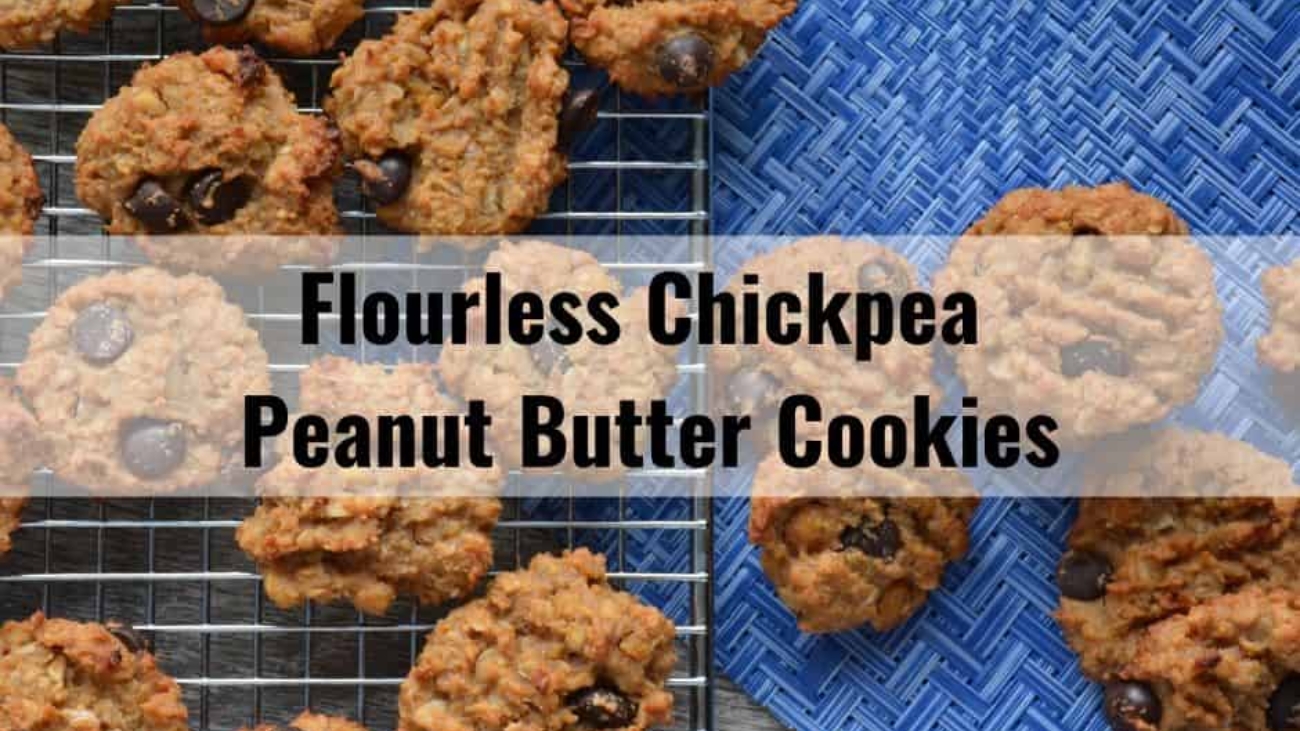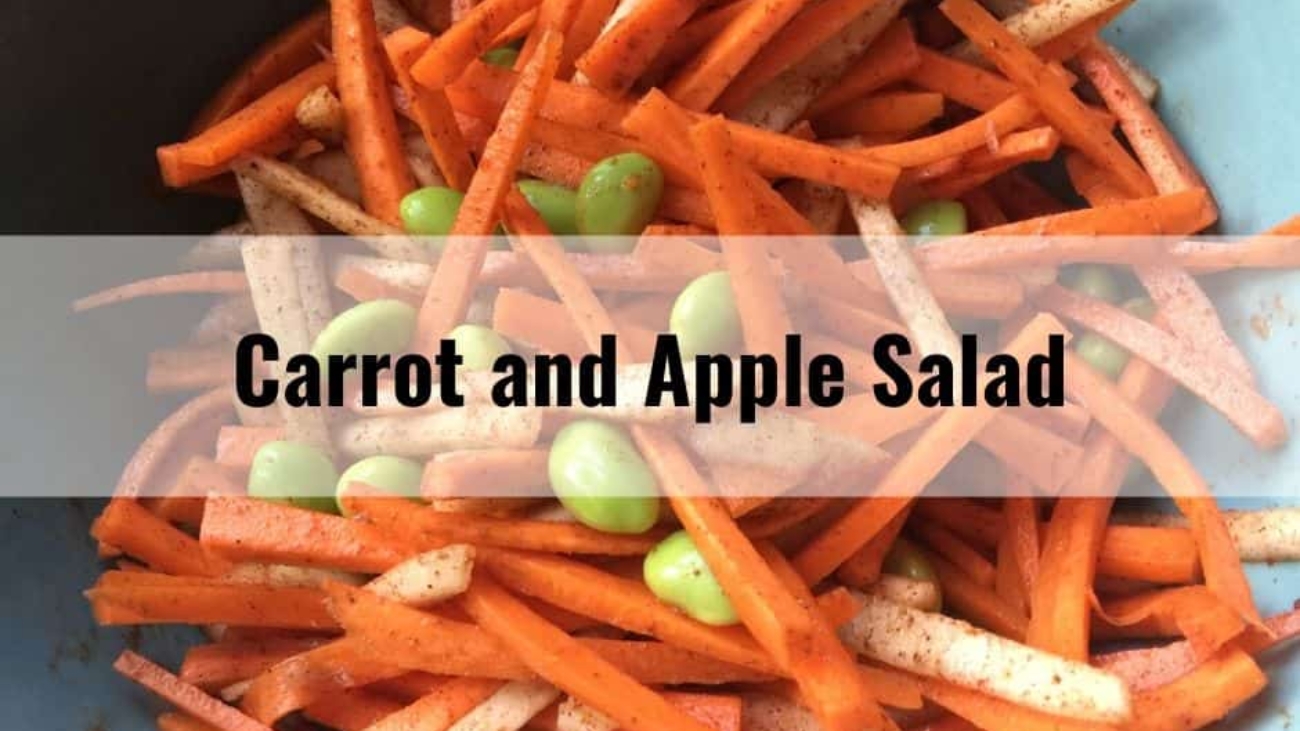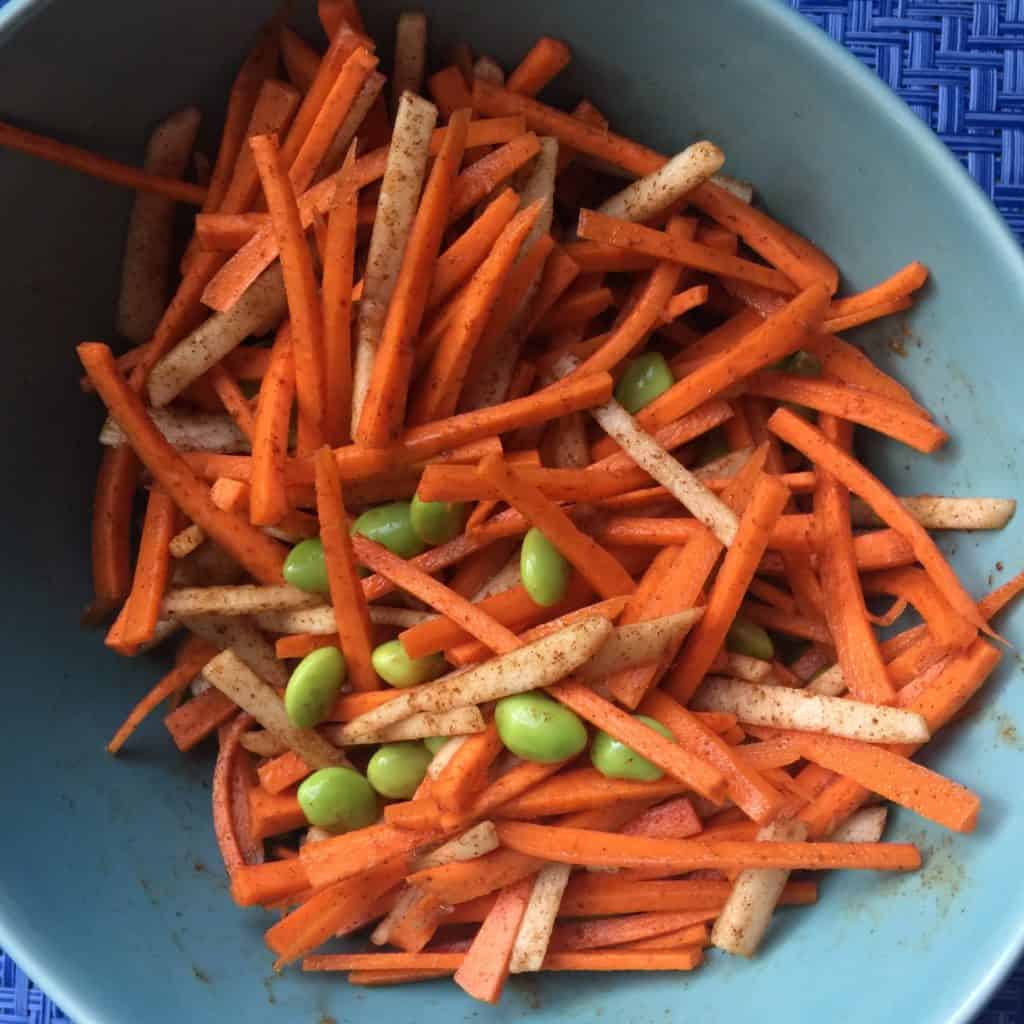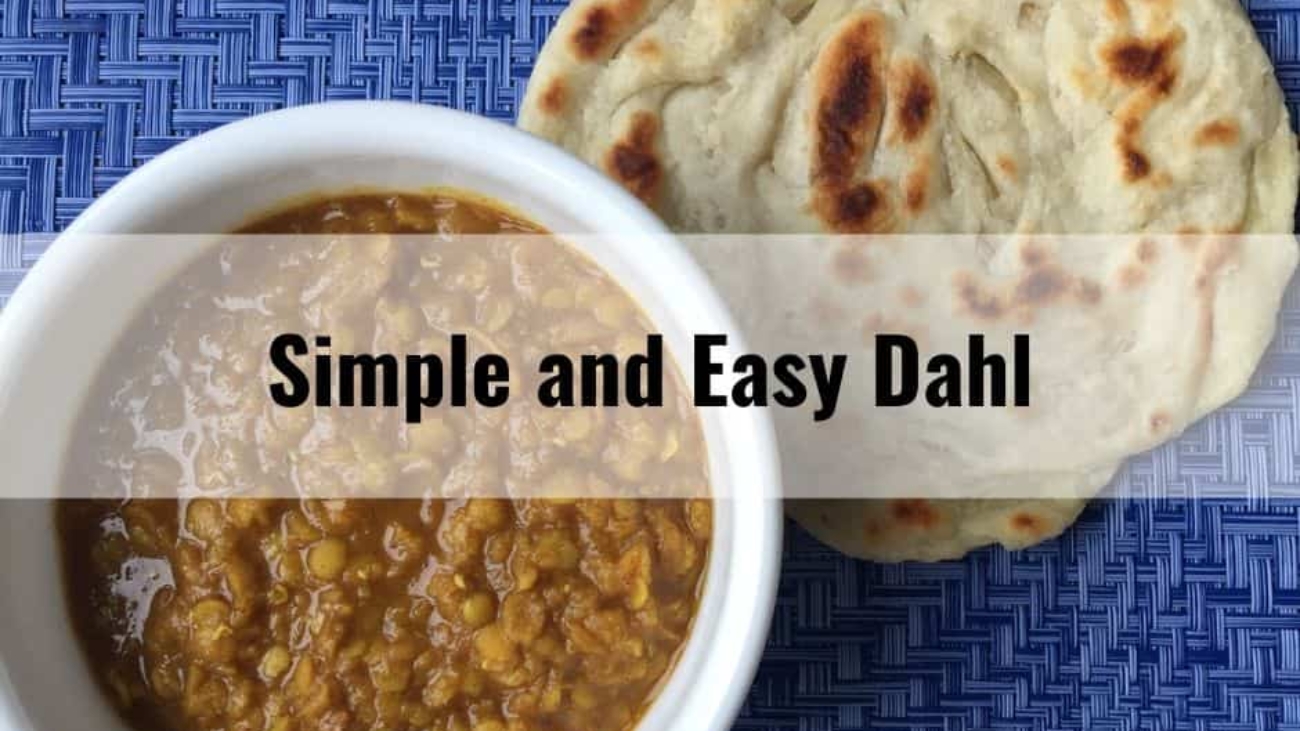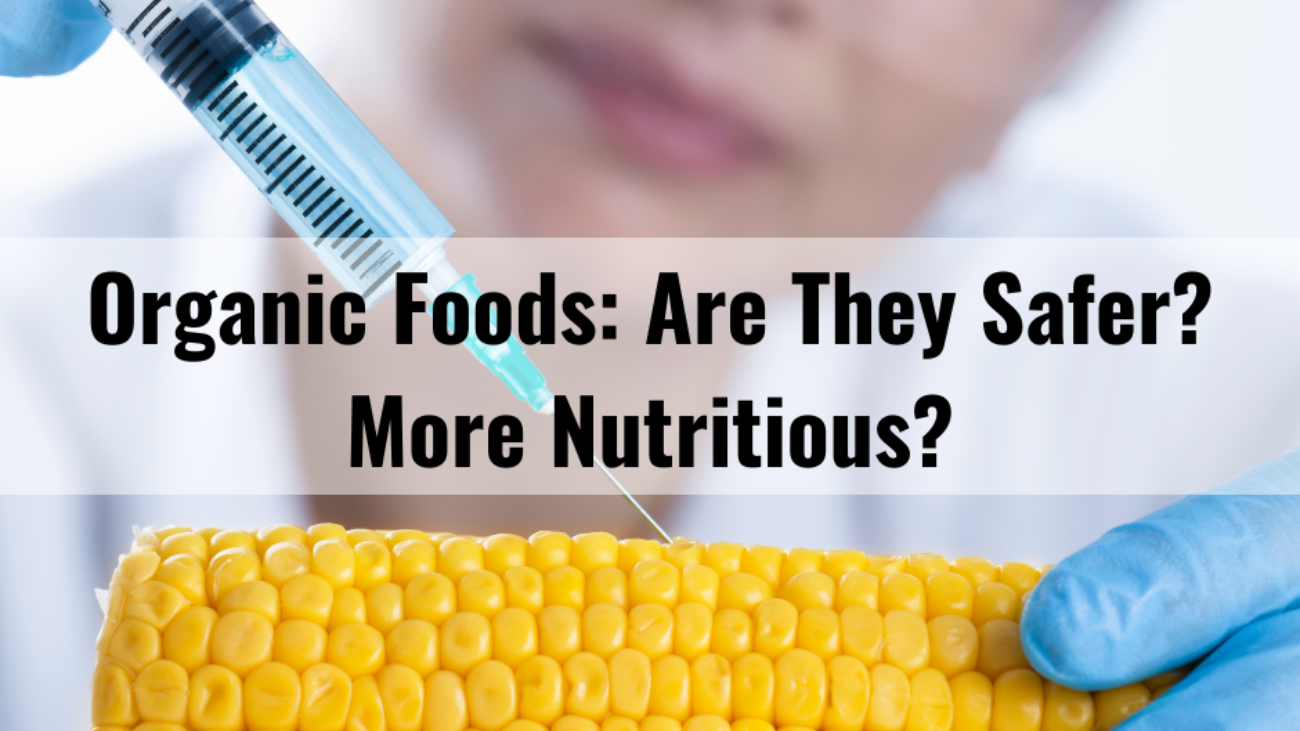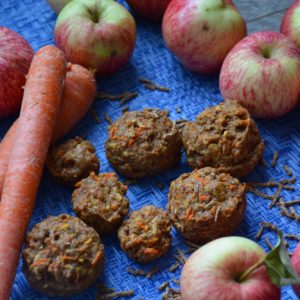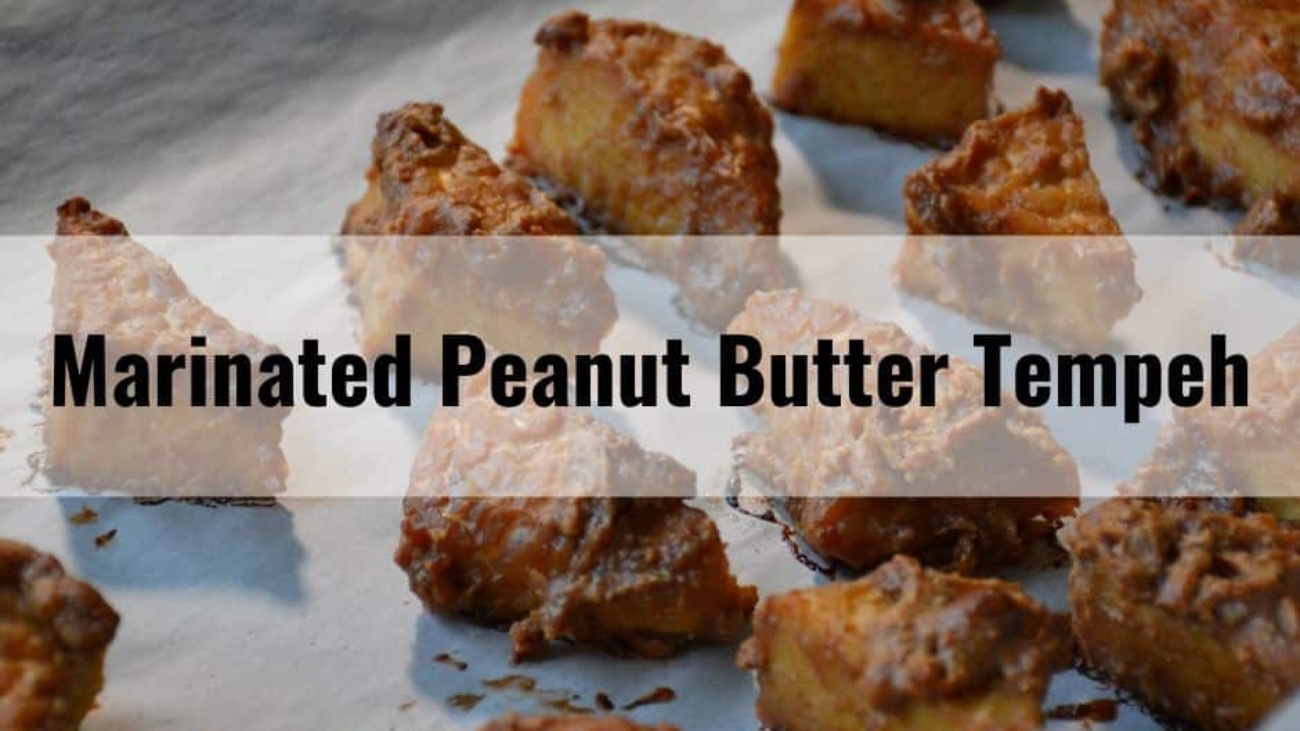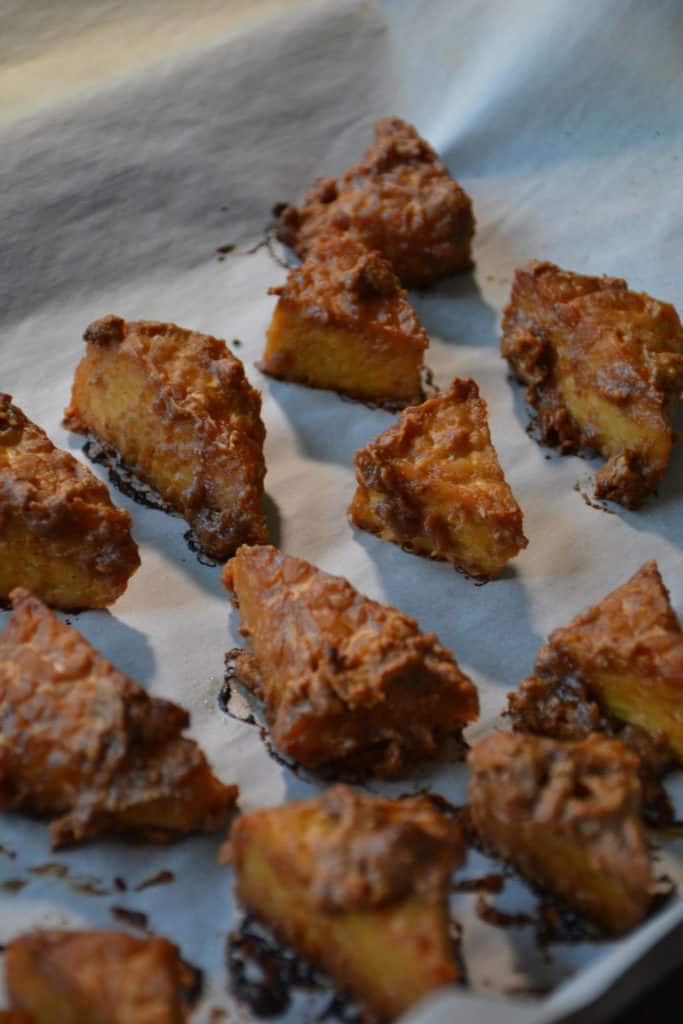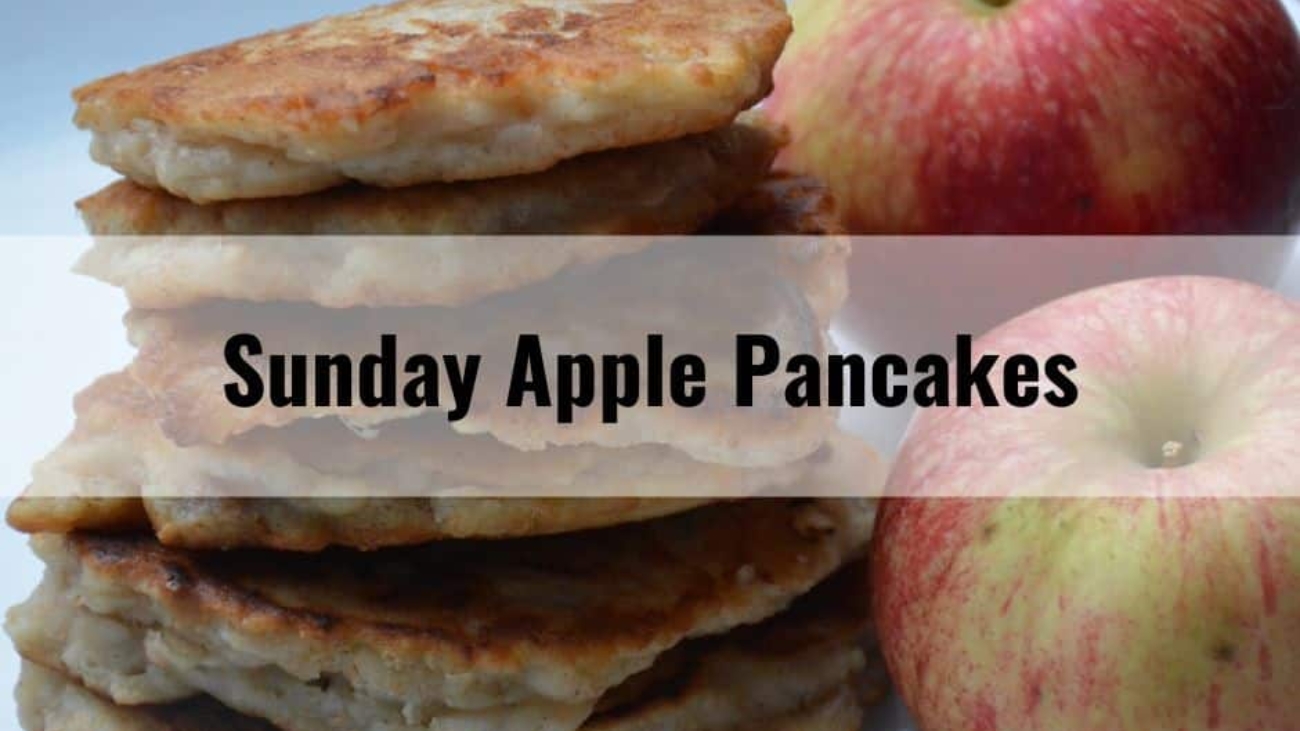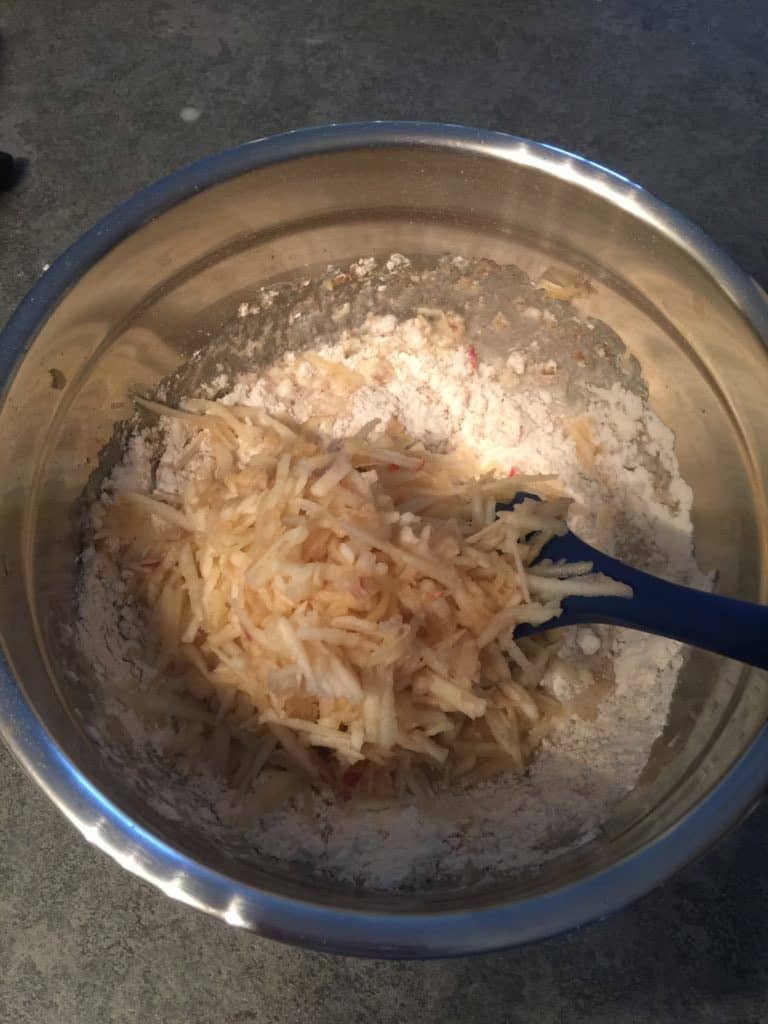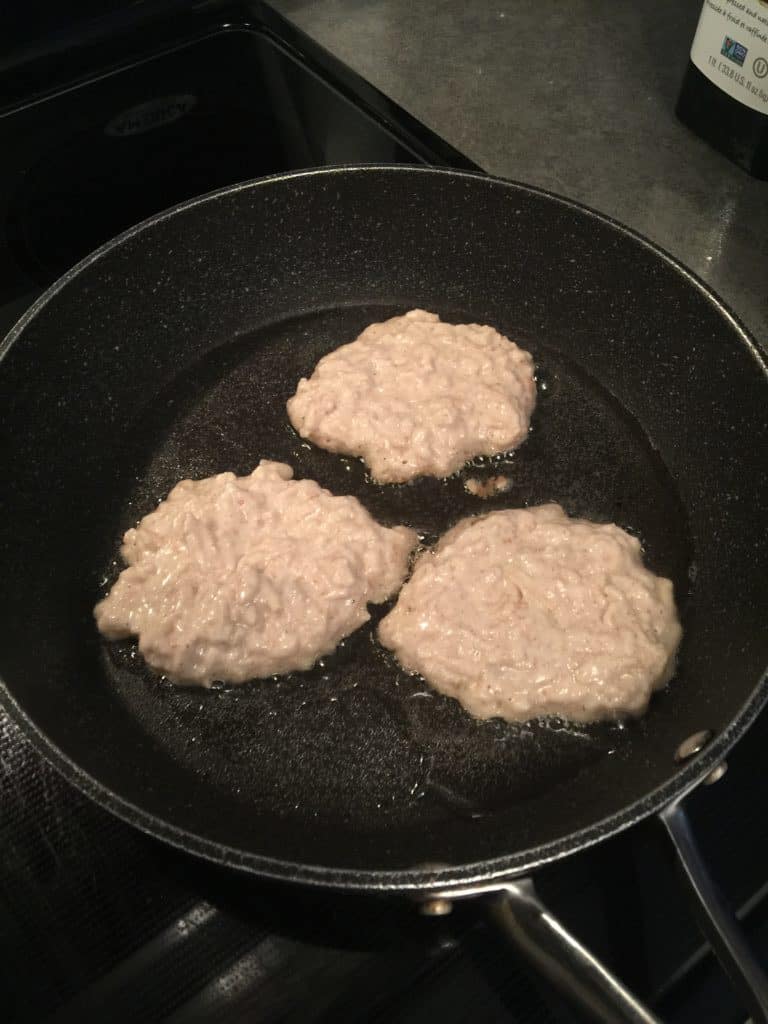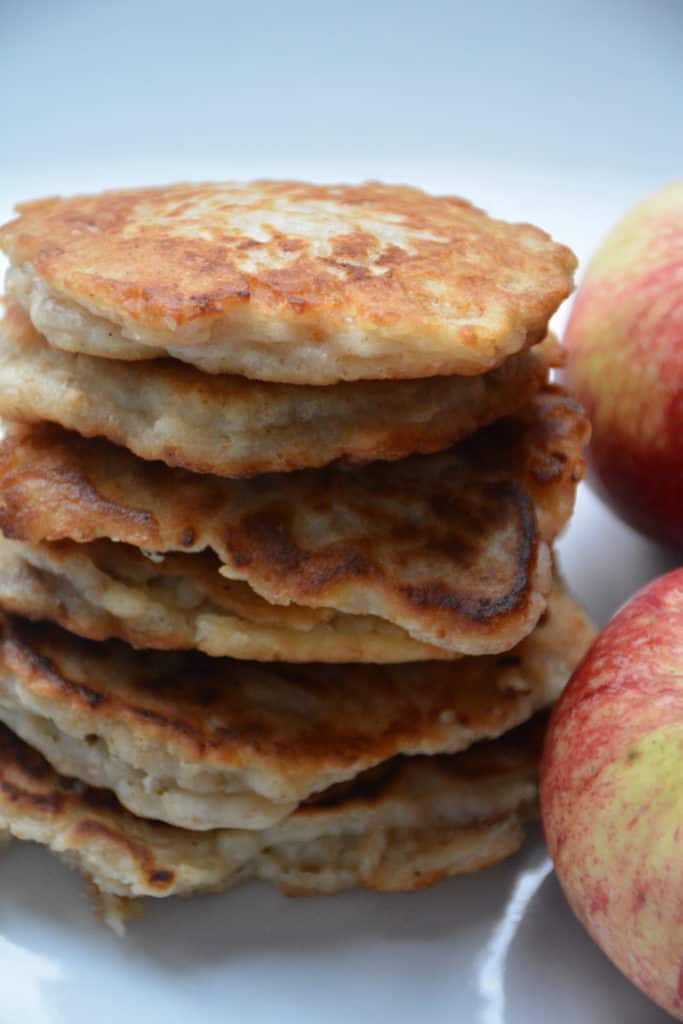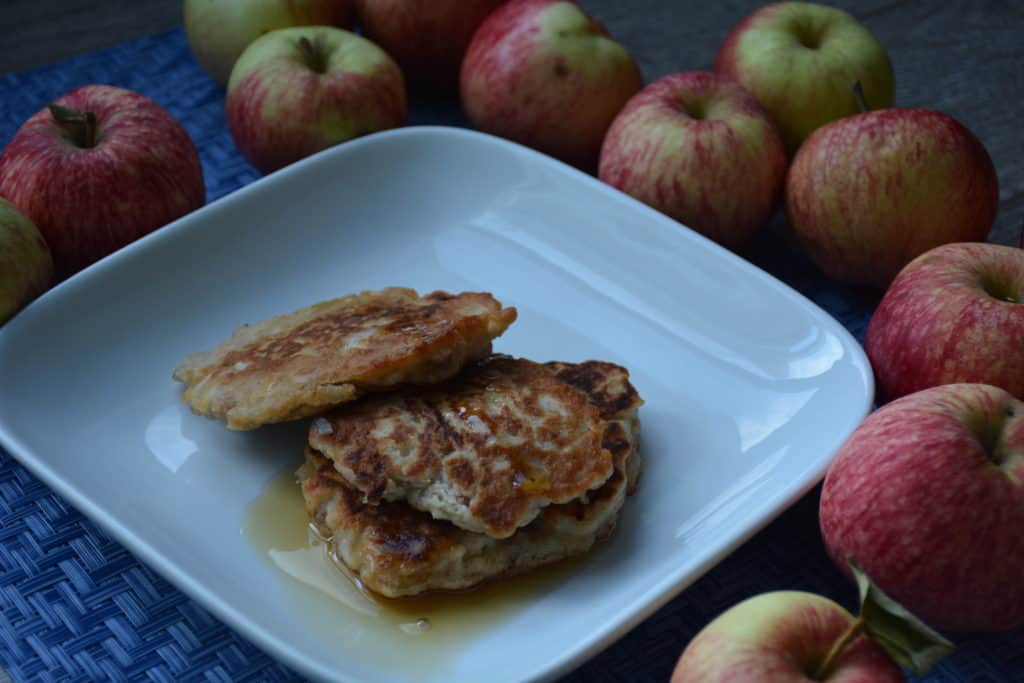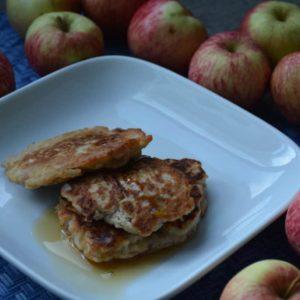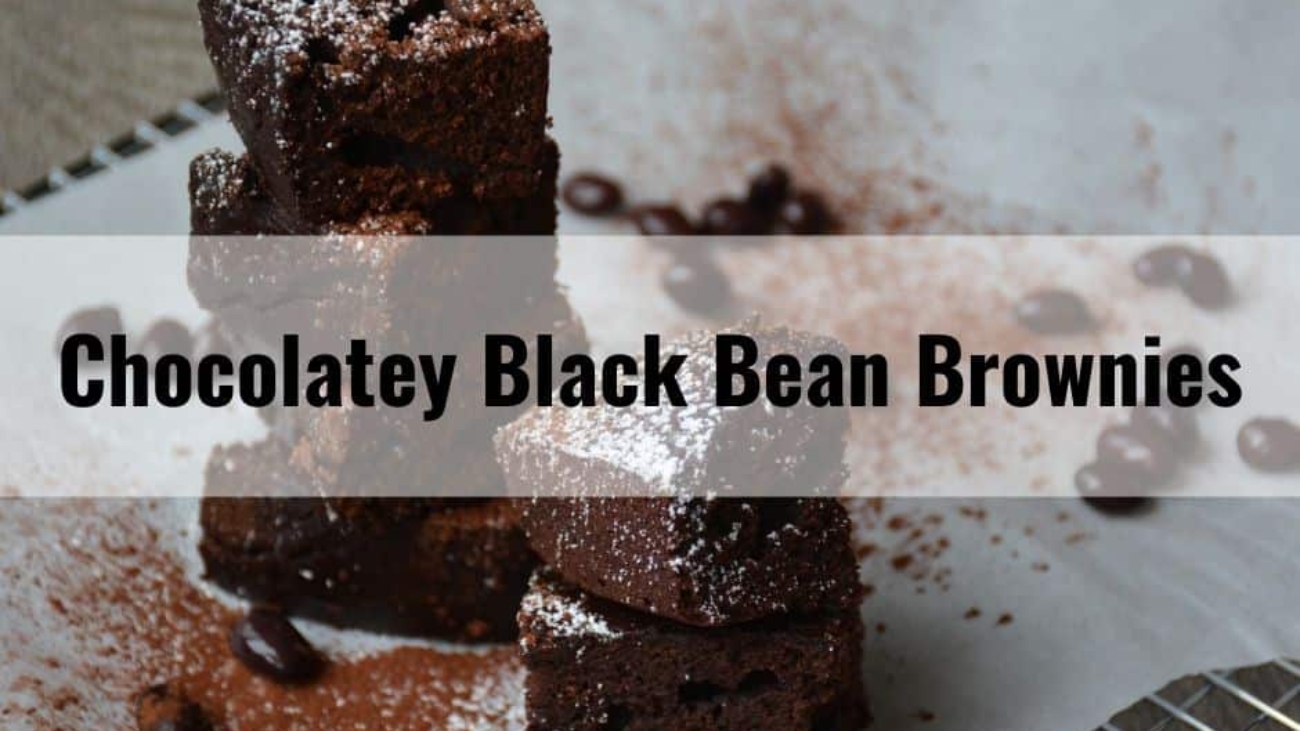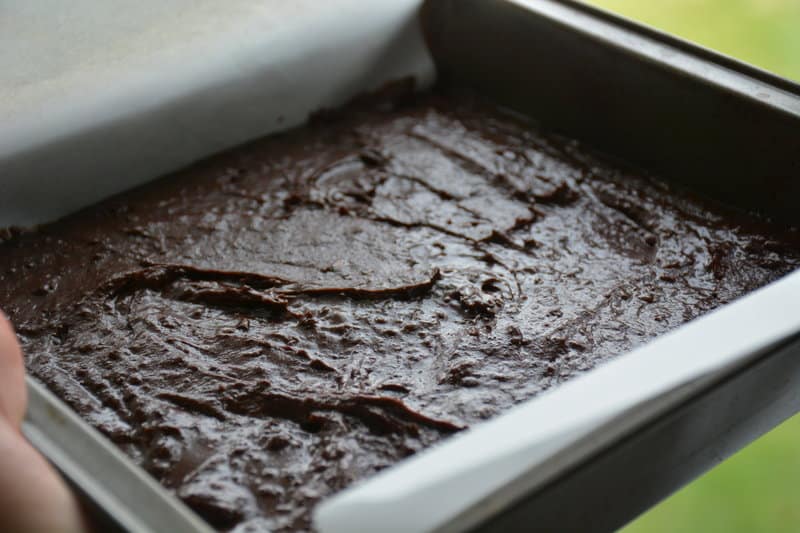I like to make versatile condiment to keep in my fridge for salads, wraps, sandwiches and crackers, like my Quick and Easy Chickpea Hummus.
In recent year, dinner bowls are super popular. I’ve been seeing other bloggers making fun versions of dinner bowls. I decided to take a shot at it and do something a little different from my boring green lettuce salad plate.
To be honest – there are quite a few steps that you will need to take to make this dish. They’re not difficult or complicated steps, but there are steps. Let’s break it down and talk about what you can do to make this easier for you.

First, the tempeh. You can definitely marinade the tempeh the day before you plan to eat these. Check out the recipe here. Then all you need to do is nicely place them in the oven during the last 30 minutes of the veggies roasting.
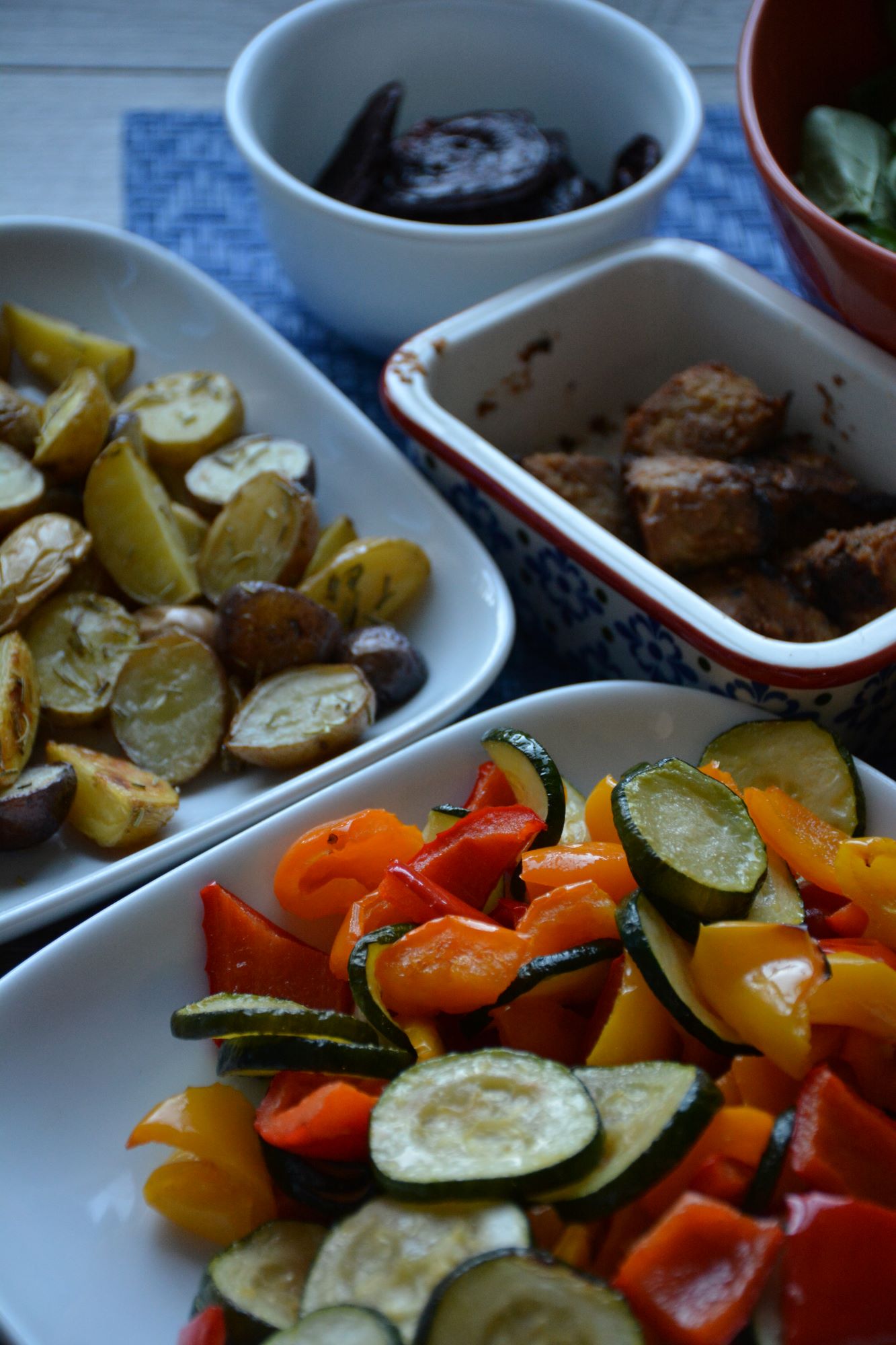
Then there’s the veggies. They are no more than simple roasted veggies with some olive oil. Nothing you haven’t done before. This step is a breeze. The oven temperature is 400F, most veggies take about 40 mins.

And that’s it! Besides putting it all together with the avocado and sesame seeds, you’ve got yourself a dinner bowl.
Enjoy !
Recipe adapted from Curry Yogurt Sauce.
Are you a salad lover? Make this dressing and leave me a comment below to share your thought.
Curry Yogurt Dressing
Ingredients
- 1 tbsp Olive Oil
- 1/4 cup chopped yelllow onion
- 2 cloves garlic, minced
- 1 1/2 tsp muchi curry powder
- 3/4 cup plain full fat yogurt
- 2 tbsp tahini
- 1/2 tbsp fresh squeezed lime juice
- Dash of smoked paprika
- Salt and Ground Black Pepper, to taste
Instructions
- Heat the olive oil in a non-stick skillet for 1 minute. Add the onion and cook for 2-3 minutes until tender and translucent.
- Stir in the garlic and curry powder. Cook for one more minute until aromatic. Transfer to the single serving cup for your blender and allow to cool for a couple of minutes.
- Add the rest of the ingredients to the blender cup and puree until smooth.
- Store in an airtight container in the fridge.


